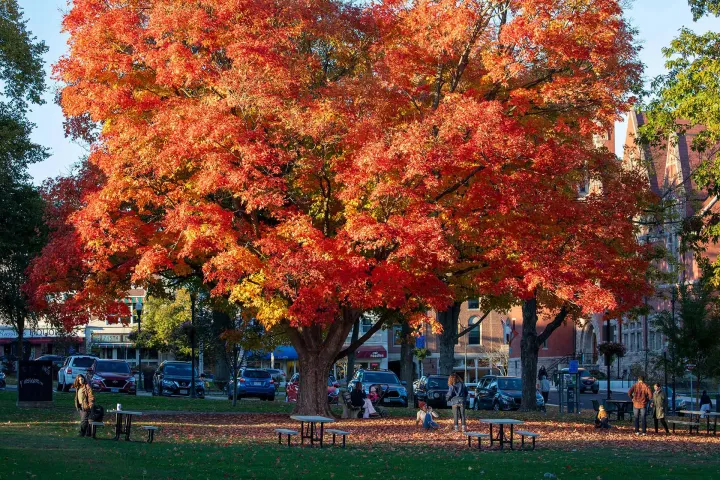Artist Megan Smith Leads "Queering Reproductive Justice" Event

On Friday, Oct. 26, the Women’s and Gender Center (WGC), in collaboration with the Mead Art Museum, hosted a day of art and activism with Megan Smith.
Smith created the now-iconic bird image in 2011 for the 40th anniversary of the Hyde Amendment, a relatively unknown piece of legislation that blocks people from using federal funding, including Medicaid, to pay for abortions. Smith, who has the image tattooed on their arm, explained that they’ve always loved both the idea of flying because of its inherent “effortlessness and weightlessness” as well as the sense of community that birds represent. Smith explained how “migrating birds are individual, but they move as a collective. They’re moving in the same direction.”
Danielle Amodeo, the public programs and marketing coordinator for the Mead and the event’s organizer, echoed the idea that Smith’s image fosters a sense of community. She noted that the accessibility of the image is essential to community-building; anyone can visit Smith’s website (Repeal Hyde Art Project) and print out copies of the bird template or create their own.
Additionally, Amodeo said that whenever you see this bird image — whether on someone’s door or in their office, for instance — “you know that they support reproductive justice.”
The themes of collective movement and community-building anchored the event’s “Art and Activism Workshop,” which took place in the WGC from 1-3 p.m. During the workshop, Smith encouraged event-goers to create what they imagined to be a “liberatory future,” using magazine clippings, beads, straws, pastel crayons and green sheets of paper.
With these materials, participants created 3D community gardens, centers for learning and spaces for healthy communication. Once the works were completed, they were lined up next to one another and connected.
This kind of art ensured that the topics of self-care and healing — the goals of this workshop — remained central. Smith, who also works as a therapist, noted that the workshop provided a space for participants to take a break from the turbulent political times and to engage in creative expression, even for those who are less artistically inclined.
The event was part of the WGC’s third annual Reproductive Justice Week. Nayah Mullings, the director of the WGC, explained that the goal of this week was to focus on “queering” the reproductive justice movement and shifting the mainstream mindset about what reproductive justice means.
Mullings encouraged people to think not just about broadening the definition of reproductive justice, but also about who belongs in the movement. Intersectionality is central to the reproductive justice movement — the movement is not just for cis-women, but for individuals of any gender identity and expression, according to Mullings.
“Reproductive justice is not just about access to abortion,” she said. “It is also [about] the right to clean water, to living in a safe environment. Immigration justice is reproductive justice.”
Amodeo similarly discussed the importance of intersectionality in the reproductive justice movement and argued that the partnership between the Mead and the WGC is essential for helping all members of the Amherst community, especially its most marginalized individuals.
“When one member of the community is hurting,” she stated, “we are all affected.” She highlighted the Mead as a resource for individuals in the Amherst community and urged staff, faculty and students to visit or call the museum and to let them know what they want to see in the Mead.
Responding to the “liberatory future” that Smith encouraged event-goers to envision, Mullings discussed her hope for reproductive rights for transgender and queer individuals “who do not identify as women, but who are pregnant and absolutely want to have the baby.”
Art, Smith, Amodeo and Mullings argue, allows us to envision this as a real possibility.




Comments ()